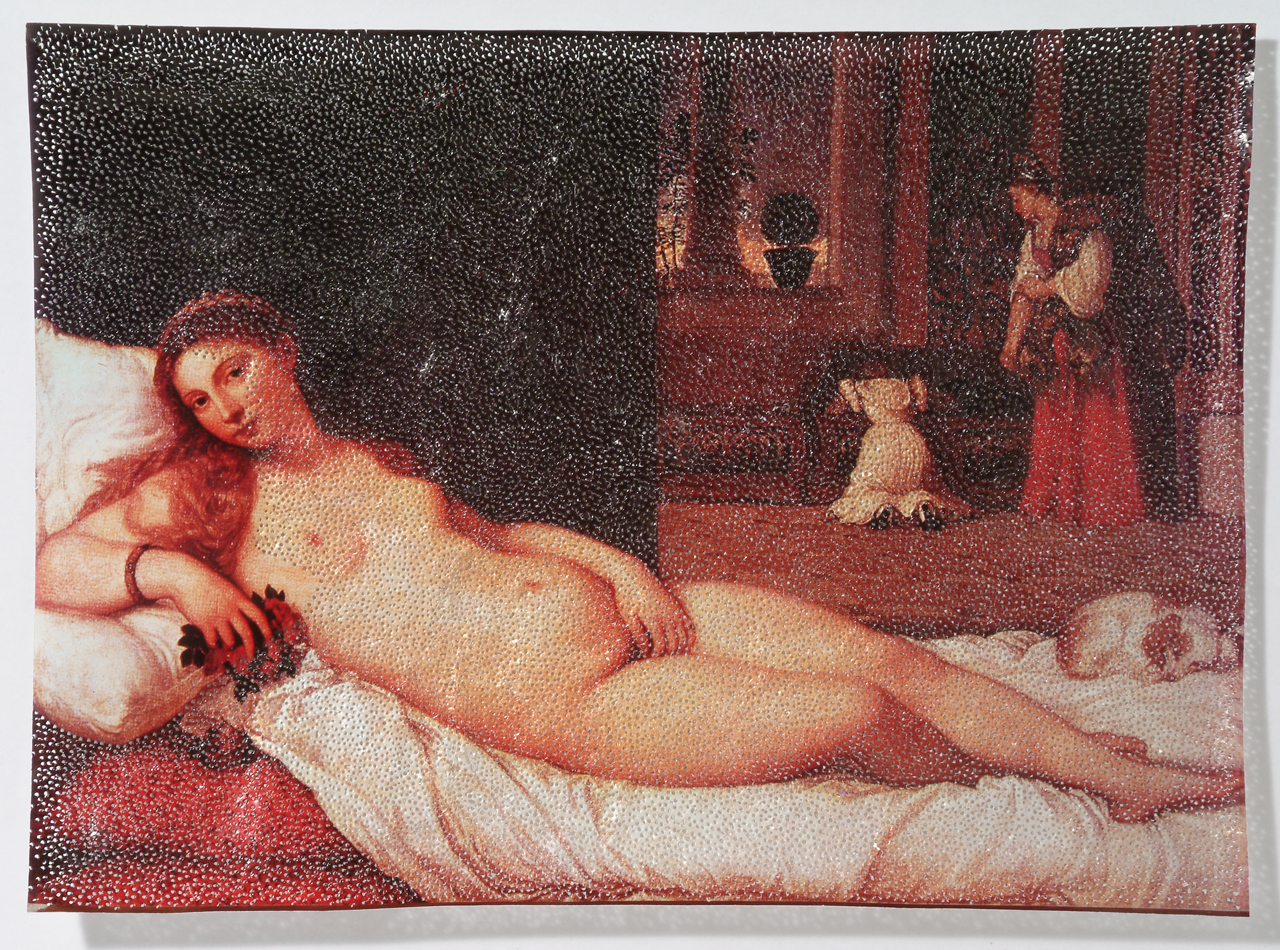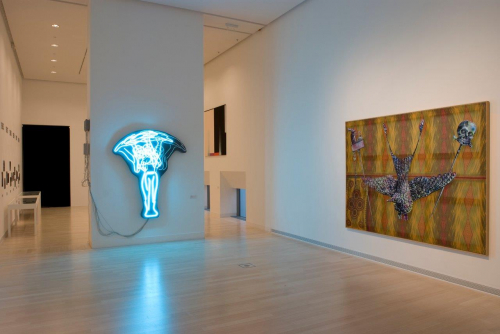In this work Bea Veszely appropriates famous depictions of women from the history of art, or more precisely, their photographic reproductions. Bernini’s funerary monument to Ludovica Albertoni, Philippe de Champaigne’s painting Ex voto, Tintoretto’s Susanna and the Elders, Bellini’s nude and Tiziano’s famous Venus of Urbino each represent the ideal woman of a different age. Alongside biblical, classical and renaissance nudes, there is the Blessed Ludovica, who devoted her life to the poor after the death of her husband, and Catherine de Sainte Suzanne, the painter’s daughter who was miraculously cured from her disease with the help of God. Represented by men, ideal women originally became part of art history as models or subjects of artworks. Veszely appropriates these reproductions of artworks with a unique method: she punctures the colour cibachrome surface with a tiny needle, leaving it intact in some areas and covering it in a dense mesh of holes or destroying it completely in others. The pattern or “embroidery” damages, but also transubstantiates the original image: the small holes make the thick photographic print transparent and airy, resulting in a fragile object resembling handiwork such as lace or filigree. Time-Laces represents the tendency in the nineties when women artists began successfully introducing unique feminine aspects and methods to contemporary art. K.Sz.

